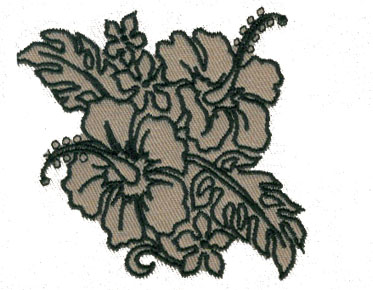How to Learn Machine Embroidery Digitizing
Embroidery Digitizing. . . There's so much to learn, so much to learn. But how will you begin, and how will you proceed with your embroidery? Today, you will learn this new skill in a unique way.
Be patient
Embroiderydigitizing takes time to learn. It is similar to any other skill that you have acquired in life. First you need to be taught the technique, and then practice, practice, practice. Once you have mastered it you will get great rewards. This can be an enjoyable journey so please don't be impatient. You will get there eventually.
It took me several months to learn. I started my embroidery hobby by downloading designs from the internet. Most of these designs were of poor quality. Originally I thought I was doing something wrong or was using the wrong materials. As it turns out the designs were the problem. Be wary of designs obtained online. Make sure they are from reputable design houses.
Another thing I tried was to create designs using an art to stitch program. I was excited to turn my artwork into embroidery but was disappointed with the results. It was too dense, almost bullet proof and jumped all over the place. I had lots a thread breaks and sometimes even broke needles. Half my problem was cheap thread but the other half was that the art to stitch program produced a poor design. I later found out that good digitizing is done manually.
When you start out with Embroidery Ware you will create poor designs too, but run your designs anyway. This is the best way to discover what does and doesn't work. Also you can learn by running designs that came with your machine. They have been professionally digitized and are good examples. Do this at the slowest speed and occasionally stop your machine to see the different steps in the design.
Underlay, underlay, underlay
One of the first things you will notice in professional designs is a coarse set of stitches before the top stitches. These are underlay stitches. Underlay is the single most important thing you can put in your embroidery design. Underlay stitches tie the top fabric to the stabilizer and give your top stitches loft. Woven fabric typically does not stretch in the long direction, but it stretches in every other way. Knits are even worse. They stretch in all directions. Stabilizer on the other hand does not stretch because it is a non woven fabric. Non wovens are made using fibers randomly oriented in many different directions. This keeps them from stretching.
Many forces are exerted on your fabric while its being embroidered. By adding underlay to your design and using proper stabilizer you will prevent your embroidery from puckering and shifting.
Stitch
order
The second most important thing you will see in a good embroidery design is proper stitch order. Think of stitch order as a road map that no one sees but you. The map should define a path that covers over its self as well as include positional adjustments to compensate for how the fabric has moved.
Try to break your designs into smaller parts and avoid stitching out a large area at once. A good rule of thumb is to work from the outside in. This is because fabric tends to shrink while embroidering. Always put your underlay down right before you need it. One example is a set appliquéd letters. It's best to do the placement line, cut line, tack down, and top stitches for each letter individually instead of the whole word.
Using cheap supplies
One of the early lessons I learned is there is no such thing as inexpensive embroidery supplies. You get what you pay for. One example is a cheap thread set I bought for my brother machine. Sure I had all the colors but most of the threads would break during a run. Some of them were so sticky that I had tension problems. When thread breaks did happen I could not hide where the embroidery restarted. Do you really want to risk your prized design on poor quality thread? Just buy the good stuff. My thread of choice is Madeira. You can find it online.
Don't give up!
Several of my users gave up after only digitizing for a couple of days. Embroidery digitizing is a skill, which I firmly believe anyone can learn to do, but you have to work at it. It is really an art form in its own right. Just because embroidery digitizing uses a computer doesn't mean you can skip the human part. You are in control of the computer and program. It is just a tool to unleash your creativity.
There are a lot of professional digitizers
that have been doing this for years and are still learning. I am still learning
and having a lot of fun creating embroidered items. Don’t give up create
something wonderful.



